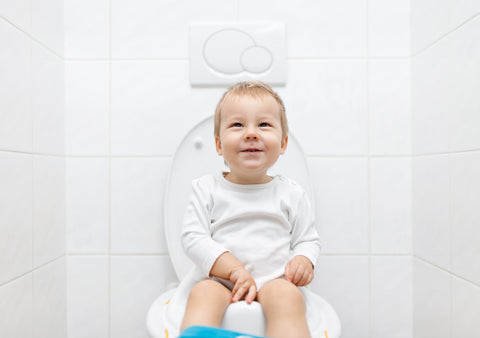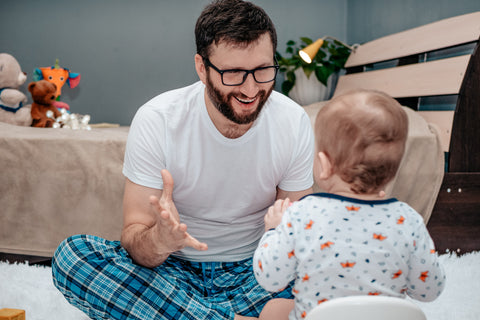How to train kids to use the toilet independently?
Ah, potty training. It’s a huge milestone for toddlers, and, sometimes, a source of stress for parents. As much as you might be looking forward to saying goodbye to diapers forever, teaching your little one to use the toilet can seem like a daunting task. If you’re nervous about approaching this milestone and aren’t sure where to start, don’t worry, BabyBond’ve got your back.

What’s a suitable opportunity to star toilet training?
In general, the start of toilet training should be between 18-36 months of age. But not all children are toilet trained during this time period. Some children may be able to control their bowels and bowels during the day by 20 months, but most children learn to control their bowels and bowels between the ages of 2 and 3. So, the best way to start toilet training is to look at your baby's performance, not some specific age.
Then observe your baby's performance and decides when to start potty training
1.Your baby poops at a set time every day.
2.The baby's diaper will stay clean for hours, and the diaper will not be wet when you wake up from sleep.
3.When the diaper is wet, the baby will ask to change the diaper.
4.The baby expresses interest in other people's toilet behavior and even sits on the toilet for a while.
5.The baby begins to like to do his own things by himself, and his sense of independence begins to rise.
6.In the short time before peeing, the baby can realize and have certain expressions or reactions (such as humming, squatting or telling you, etc.).
7.Able to execute simple commands (eg "give me the toy").
8.Can say words that indicate urination or defecation (eg: peeing, stinking, etc.).
9.Will study their own body organs.
10.Climb onto a children's toilet or an adult toilet.
11.When the diaper is wet or dirty, it will pull the diaper away, or run over to tell you that the diaper is dirty.
12.The time interval between wetting diapers has become longer, at least 3 hours.
13.The stools are regular, soft and shaped.
14.Can pull up and down pants.
If it's the age for toilet training time, and the baby is not ready. Don't be too anxious. off all, just like eating solid foods, you want to watch your baby's progress, not count the dates on the calendar. Wait until your baby is really ready to start training so the whole process isn't too painful for the both of you.
In general, the start of toilet training should be between 18-36 months of age. But not all children are toilet trained during this time period. Some children may be able to control their bowels and bowels during the day by 20 months, but most children learn to control their bowels and bowels between the ages of 2 and 3. So, the best way to start toilet training is to look at your baby's performance, not some specific age.

Preparing for toilet training
After ensuring how your child is toileted, you'd better prepare the following before toilet training:
1.Psychology classes for children
It is necessary to establish a good parent-child relationship with the child, let the child have a basic sense of trust in the parents and the environment, and be willing to cooperate with the parents to learn to control defecation. If the child is unwilling to obey the parent's instructions because of his sense of independence, don't force the child, but learn to use selective language to discuss with the child.
2.Toilet supplies
(1) Potty: There are many types of potties on the market. When choosing, pay attention to buying a safe and comfortable bedpan. And it should be easy to clean, the bottom of the basin is wide, the height is moderate, and the general plastic products will do. The style should not be too fancy, otherwise the baby will be distracted and only look at the colors and patterns, which is not conducive to the smooth training of bowel and bladder.
(2) Small underwear: Take the child to the store and let him choose his own underwear, which can greatly increase the child's interest in toilet training. Wearing a pair of panties featuring his favorite cartoon character, the child will feel grown up and proud. In order not to stain the panties, he will naturally reduce the occurrence of "accidents".
(3)Clothes: Choose cotton, loose, absorbent, and easy-to-clean trousers. It can make the baby clearly feel the uncomfortable feeling after getting dirty, and it is easier to clean up, which is beneficial to the baby to cooperate with defecation training faster and better. Training is best done in summer. Because the baby wears less in this season, it is easy to change and wash, even if it gets wet, it is easy to handle, and there is no need to worry about catching a cold. If the baby grows up to the best time for training and just enters the cool season, as long as there are many people to take care of at home, training at this time is not a bad idea.
Correct toilet training generally includes the following seven steps:
Step 1: Bring the baby to the toilet
Step 2: Clean the little butt after pulling
Step 3: Teach your baby how to put on pants and wash hands
Step 4: Let the baby understand the function of the toilet
Step 5: Teach your baby to use the toilet
Step 6: Start night training
Step 7: Repeated practice, strengthening training
Hope these tips will help you BabyBond always support you.

5 comments
Love this!! Planning to try with Baby
These were all so useful .We recently tackled toileting and had huge success, Thank you
Fantastic tips! Potty training is something we can all (families and caretakers alike) always need tips on!
This post is really informative! Potty training takes patience, great reminder for parents!
Thanks!
very useful article!
